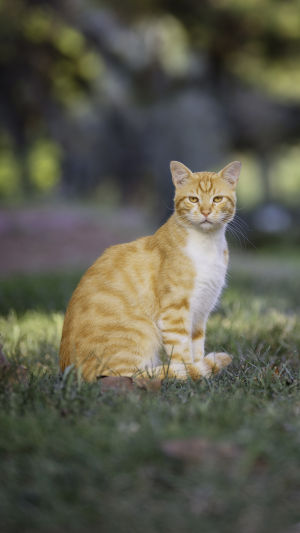Hey Lykkers! Ever wondered why some cats have spots while others have stripes or solid coats?
The mystery behind these feline patterns has intrigued scientists for years, and they've made some progress in unraveling the genetics behind this fascinating phenomenon.
Let's explore the world of cat genetics to uncover the secrets behind those beautiful spots and stripes.
<h3>The Quest for Answers</h3>
While the question of why some cats have spots and others have stripes remains unanswered, researchers have identified two key genes that play a role in determining the size and shape of these patterns.
One such gene, called Taqpep, has been linked to the development of stripes in cats. Cats with one or two normal copies of the Taqpep gene display stripes on their fur, as observed in various domestic and wild felines.
However, mutations in both copies of the Taqpep gene can result in unique patterns, such as blotches or swirls, on the cat's coat. This genetic variation gives rise to the classic tabby cat patterns that we so commonly see. According to cat geneticist Leslie Lyons, these Taqpep mutations are responsible for the distinct patterns found in tabby cats, adding to the diversity of feline coats.
<h3>Unraveling the Mystery of Spots</h3>
Interestingly, Taqpep mutations not only influence stripes but also play a role in modifying spots in certain cat species. For example, cheetahs, known for their black spots on a yellowish-tan background, exhibit a unique variation known as "king cheetahs." These king cheetahs carry mutations in both copies of the Taqpep gene, resulting in larger, blotchy spots on their fur. In a striking pattern, these blotches align along the spine to form stripes, showcasing the genetic diversity within the feline world.
<h3>The Missing Piece of the Puzzle</h3>
While scientists have made significant strides in identifying genes associated with feline patterns, there is still a missing piece to the puzzle. The exact mechanisms that determine why some cats develop spots, while others have stripes or solid coats, continue to elude researchers. The complex interplay of genetics, environmental factors, and evolutionary history adds layers of complexity to this intriguing field of study.
<h3>Unlocking the Secrets of Feline Patterns</h3>
As we unravel the genetic mysteries behind cats' spots and stripes, we gain a deeper appreciation for the diversity and beauty of the feline world. While many questions remain unanswered, each discovery brings us closer to understanding the intricate patterns that adorn our beloved feline companions. So, the next time you admire a cat's striking coat, remember that beneath those spots lies a genetic story waiting to be told.
Stay curious, Lykkers, and may your love for cats continue to inspire wonder and discovery in the world of feline genetics.
Spots & Stripes: A gene that helps determines cats' color patterns
Video by Stanford Medicine





